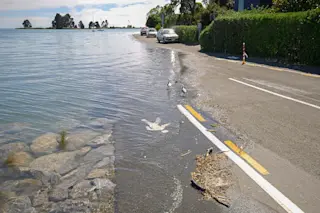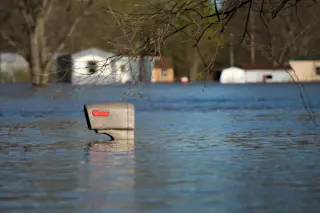By Dave Levitan
The Casino Pier Star Jet roller coaster submerged in the sea on January 13, 2013 in Seaside Heights, NJ. Courtesy Glynnis Jones / Shutterstock Diamond City, North Carolina, is not actually a city, in that no one actually lives there. People did live there, though, back in 1899. That was when a major hurricane hit the community, on a small barrier island near Cape Hatteras. Homes were destroyed, animals were killed, and graves were uncovered or washed away in the storm according to a conservation group in the area. By 1902, all 500 residents in Diamond City had picked up and left.
Left, Rasmus Midgett sits on the wreckage of the Priscilla after the San Ciriaco Hurricane. Right, another ship driven ashore in the storm. Images courtesy State Archives of North Carolina. The people there didn’t have computer climate models, or rapidly rising seas, or any understanding ...













